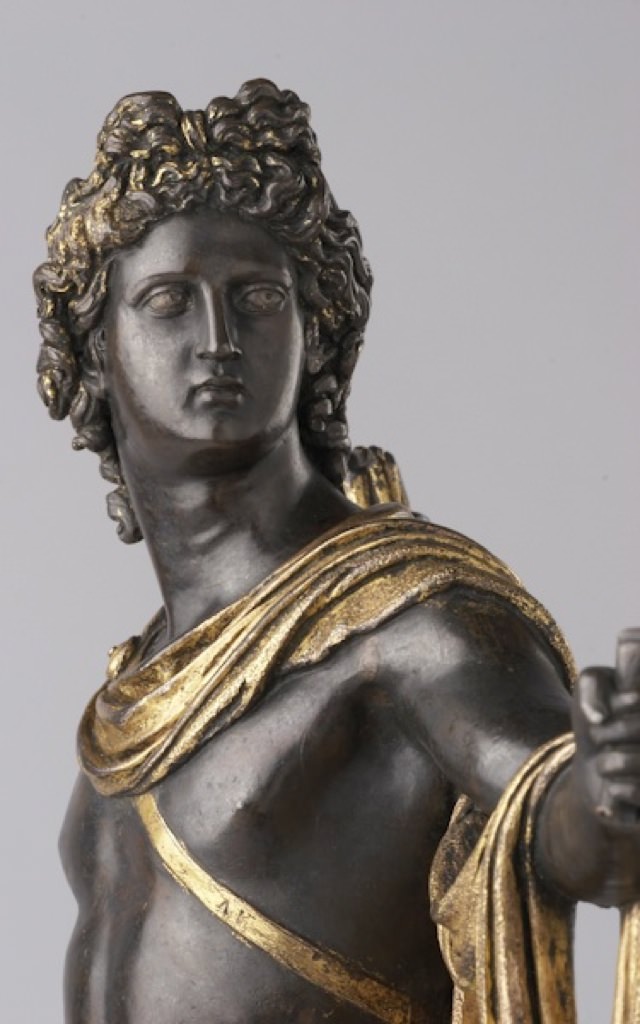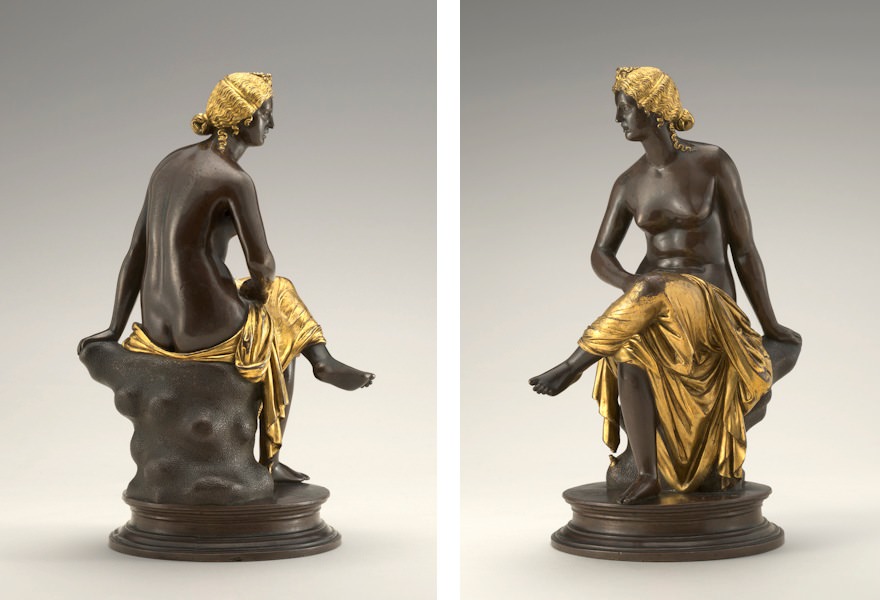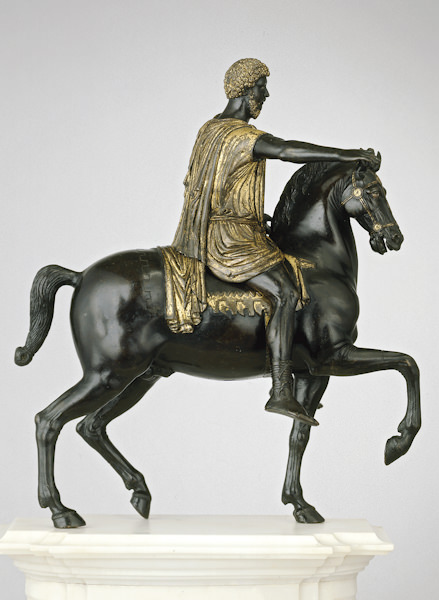Once upon a time, antiquity was new. All of a sudden, in the decades around 1500, the Laocoön and the Apollo Belvedere and other now-celebrated monuments of the ancients began to come forth from the ground, dug up in the fields about Rome. To the artists, patrons, and humanists who beheld them for the first time, these sculptures were breathtaking: timeless yet fresh, canonical yet startling. As in few other moments in the history of art, the shock of the new and the shock of the old were one.
Among the first artists to respond to this surprising treasure trove was a goldsmith from northern Italy called Pier Jacopo Alari de Bonacolsi (c.1455-1528), better known as “Antico,” for his uncompromising passion for Pagan antiquity. Working for Isabella d’Este and her Gonzaga relatives in Mantua, he made as bronze statuettes some of the earliest copies of these and other masterworks of antiquity, including the Spinario, the Venus Felix, and the equestrian statue of Marcus Aurelius. Today the imitation of classical models may seem like a stale and routine business, but five hundred years ago, it was an exciting and revelatory enterprise. The copies Antico made are surprising in many ways, so much so that although long cherished by collectors as possibly the most sumptuous statuettes in the history of art, the essence of their character still seems to elude full understanding.
The small but elegant show of Antico on view at The Frick Collection through Sunday comes closer than any earlier attempt to uncovering the enigma of this master’s art. Although installed chiefly in the museum’s utilitarian downstairs galleries, the bronzes are so beautifully arranged and illuminated that they seem to glow with uncommon serenity. Any visitor to the show will be struck by several remarkable features of these works. As you enter the basement gallery to the right, for example, you see two sculptures of the Apollo Belvedere in one case, and two versions of the Seated Nymph from the Robert H. and Clarice Smith collection in another. Antico was the first artist since classical antiquity to make bronze statuettes in multiples—he had to devise an innovative technique, called indirect casting, to do so—and the pieces in the show are grouped in this way so that different versions of the same model can be easily compared.
Moreover, the physical character of Antico’s statues is unique. Whereas most earlier and contemporary Renaissance bronzes were coarse and rough, Antico’s statuettes have smooth sleek jet black surfaces, and radiant gilded hair and drapery. The creation of mood and the air of sublimity in these works comes not from the depiction of gesture and expression—indeed, these features are suppressed—but rather from the extraordinary subtlety in the finishing and burnishing of the details. For instance, the drapery about Venus Felix’s legs is polished so that every fold glimmers with a slightly different degree of reflected light. An aura of radiance results making the figure look like a sensual embodiment of celestial grace.
Part of what makes Antico so mysterious for us is the sharp difference of his sensibility from our own. Like so many of the great sculptors of the early Renaissance, Antico was trained as a goldsmith, but unlike, say, Ghiberti or Verrocchio, this experience was fundamental for every aspect of his technique and aesthetic. It was critical for his advances in casting, and it is especially evident in his love for the resplendent, and the fine. Beginning with Michelangelo, however, working with gold and making sculpture rapidly diverted into two different fields—Cellini was the last European figure to excel in both—and by the end of the sixteenth century, while sculpture was seen as a sister art of painting, architecture and poetry, goldwork was viewed as a craft. One was a noble endeavor that produced works of art for profound contemplation, the other was a manual trade that made luxury items for mere delectation. This notional divide lives on to the present day, for example, in the distinctions art historians and others often make between high and decorative art.
The show at the Frick demonstrates that such distinctions do not apply in the analysis of Antico. His bronzes bring together princely splendor and humanistic subject matter, forward looking technique and love of the past, passion for colossal marble statuary and obsession with the subtlest refinement of goldsmith detail, cool reserve of emotion and warm tones of black and gold. They are prestigious goods meant for display in aristocratic settings like the Gonzaga court; yet they are also works of exquisite poetic sensitivity.
Advertisement
Antico: The Golden Age of Renaissance Bronzes, is showing at The Frick Collection through July 29.




